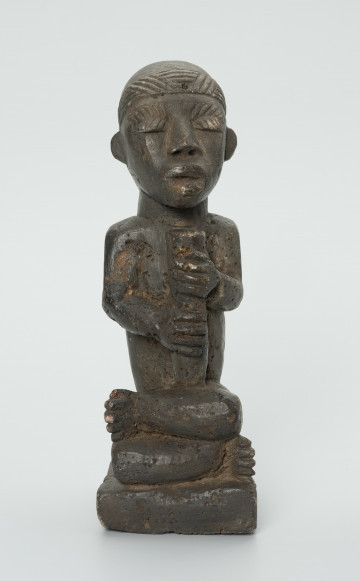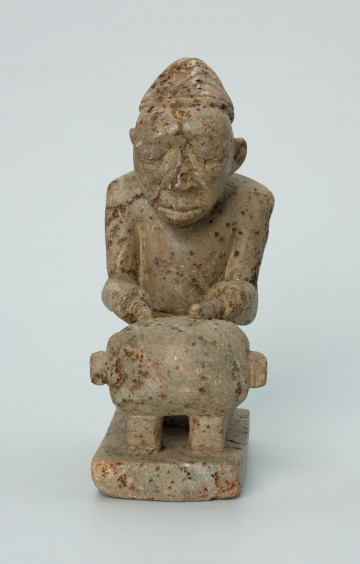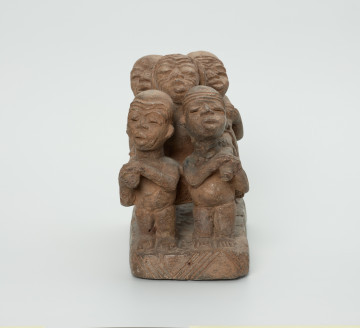
Ancestor worship figure
około 1901 — 2000
National Museum in Szczecin
Part of the collection: Mintadi figurines
The sculpture depicts two figures seated - a man on the right and a woman on the left. It is a mintadi (singular ntadi) stone figure placed on family altars and the graves of powerful and respected people, such as village chiefs and their families. The male sculpture represents a thoughtful village chief. Depictions of dignitaries and rulers are recognised by their insignia of power. In the Kikongo language, the figure in question is smoking a pipe and wearing a cap called mpu, typical attributes of a ruler. The word mintadi in the Kikongo language means guardians, custodians. The mintadi are associated with the tradition and culture of the Kingdom of the Congo formed in the lower reaches of the Congo River (today's territories of northern Angola, the Republic of the Congo, the western part of the Democratic Republic of the Congo). The Kingdom of Congo, organised by the Bakongo group of peoples, existed from the 14th to the 18th century. Its peak of development was between the 15th and 16th centuries. From the 16th century, it maintained regular contacts with Portugal and the Vatican. In 1914, it was transformed into a Portuguese colony. Some specialists believe that Bakongo art - especially the mintadi tomb figures - was influenced by Christianisation and the graves of Christian missionaries and European merchants buried in Congolese cemeteries. That is why one can also encounter another name used to describe mintadi - tumba, a term taken from Portuguese, from the word tomb, meaning tomb.
Katarzyna Findlik-Gawron
Author / creator
Dimensions
cały obiekt: height: 23,7 cm, width: 10,6 cm
Object type
sculpture
Creation time / dating
Creation / finding place
Identification number
Location / status

około 1901 — 2000
National Museum in Szczecin

około 1901 — 2000
National Museum in Szczecin

około 1901 — 2000
National Museum in Szczecin
DISCOVER this TOPIC
Museum of King Jan III's Palace at Wilanów
DISCOVER this PATH
Educational path